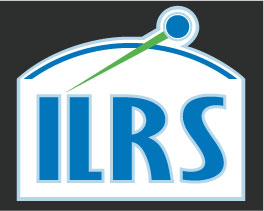Quick Links
- Normal Point Data
- Formats
- Software
- Cite the ILRS
- Revised ILRS station screening process at ILRS Operations Centers (NASA and EDC)
ILRS Implementation of SINEX (1999)
The SINEX (Solution INdependent EXchange) format is used in the geodetic community to store and transfer solutions of various parameters derived in various types of analysis. The official SINEX format can be obtained from:
https://www.iers.org/IERS/EN/Organization/AnalysisCoordinator/SinexFormat/sinex.html.
This document gives some more guidelines for the use of the SINEX format, in particular related to the ILRS pilot project "positioning and earth orientation". Most of the elements are as defined in the standard format (suggestions are given only), but the SINEX file as it is used by ILRS also contains some new elements, (i) which are of importance if you solve for biases, and (ii) which specify the analysis in more detail.
In general, one can say that the parameter solution is given by the equation
dx = [ AT W A + V0(inv) ] (inv) times [ AT W R ]
In summary, the block SOLUTION/ESTIMATE contains the solution dx, the block SOLUTION/MATRIX_ESTIMATE contains the a posteriori covariance matrix (i.e. vf [ AT W A + V0(inv) ] (inv) ), and the block SOLUTION/MATRIX_APRIORI contains the a priori covariance matrix [ vf V0 ]. Further details are given below.
HEADER
- mandatory
- constraint code "2", must be determined from data (not hard-coded)
- entries for Solution Contents separated by exactly 1 blank
- all numbers preceded by leading zeroes (if relevant)
- data: epoch of first and last observation, respectively
- for ILRS only: if bias parameters (range, time, troposphere, scale)
are solved for and included in this SINEX file, specify so by giving
a "B" in the Solution Contents (in theory, the format has to be
extended to 6(1X,A1) ).
FILE/REFERENCE
- mandatory
FILE/COMMENT
- mandatory
- every line must start with a "*" symbol
- it must include a general description of the analysis, plus a table
which specifies elements of this analysis (including the headers):
* general: (options) (example)
* - analysis center specify DEOS
* - technique SLR/LLR SLR
* - software specify GEODYN II, SOLVE
* dynamic model:
* - gravity field
* + static component specify GRIM5-S1
* + maximum degree and order specify 20 x 20
* + time dependent component specify C(2,0)-C(4,0),C(2,1),S(2,1)
* - GM [m**3/s**2] specify 398600.4415D9
* - solid earth tides specify Wahr model
* - ocean tides specify Ray model
* - atmospheric tides specify applied
* - direct solar radiation specify applied; CR fixed at 1.14
* - albedo specify not applied
* - earth shine specify not applied
* - thermal forces specify not applied
* - dynamic polar motion yes/no applied
* - empirical accelerations specify AT constant; R 1cpr
* - third body attraction specify Sun, Moon, Venus, Mars,
* Jupiter, Saturn
* - relativistic effects specify not applied
* reference frame:
* - station coordinates
* + a priori values specify ITRF2000
* + estimated specify all
* + reference point specify o.c. for stations with zero
* ecc; SLR monument for others
* + permanent tide correction yes/no yes
* - station velocities
* + a priori values specify ITRF2000
* + estimated specify no
* - earth orientation parameters
* + a priori values specify IERS C04
* + frequency [days] specify 1
* + estimated specify yes
* - precession
* + model specify IAU 1976
* + corrections specify not applied
* - nutation
* + model specify IAU 1980
* + corrections specify not applied
* - station deformations:
* + tidal uplift specify Love model
* (h2=0.609, l2=0.0852)
* + ocean loading specify IERS 1996 Conv + extensions
* + atmospheric pressure loading specify linear regression;
* Van Dam coefficients
* - geocenter
* + motion specify not explicitly modeled
* or corrected
* + tidal frequencies specify no
* - pole tide specify applied
* - definition of origin specify defined by station
* coordinates solution
* - definition of orientation specify ITRF200 a priori
* (constrained at 1 m)
* measurement model:
* - satellite used specify LAGEOS-1 + LAGEOS-2
* - wavelength of observations [nm] specify 532, except 7810 (423)
* and 7939 (694)
* - biases:
* + range biases specify estimated
* + time bias specify no
* + tropospheric bias specify no
* - data weighting specify r.s.s. of single-shot
* precision and overall
* model accuracy (2 cm)
* - center of mass [m] specify 0.251
* - model for tropospheric delay specify Marini-Murray
* (including mapping function)
* - minimum elevation [deg] specify 20
* - relativity scale SSB/LET/LE LET
* - speed of light [m/s] specify 299792458
* - relativistic effects specify not applied
* integration:
* - arc length specify 7 days
* - integrator specify Cowell 11th order
* - step-size [s] specify 100
* - estimated parameters specify station coordinates at epoch;
* EOPs at 1-day intervals;
* satellite state-vector;
* satellite accelerations;
* 1 range bias per station
* - constraints specify 1 m on station coordinates
* and EOPs;
* 5x single shot precision
* on range bias
INPUT/HISTORY
- recommended
INPUT/FILES
- optional
INPUT/ACKNOWLEDGEMENT
- optional
SITE/ID
- mandatory
- point code for SINEX internal referencing only -> use "A"
(unless more than 1 solutions for a station)
- (if relevant): minus sign of lat/lon in "degrees" component,
not repeated in "minutes" and "seconds" components
SITE/DATA
- optional
- times must refer to observation epochs
SITE/RECEIVER
- not for ILRS
SITE/ANTENNA
- not for ILRS
SITE/GPS_PHASE_CENTER
- not for ILRS
SITE/ECCENTRICITY
- mandatory
- eccentricities must be subtracted if different from zero
- 7824 and 7810: zero (i.e. refer to o.c. of "new" stations)
- 7838: zero (i.e. no eccentricity to be subtracted)
- to be generated by software/data used; not copy of standard
input file
- the new official ILRS eccentricity files in SINEX are:
ftp://cddisa.gsfc.nasa.gov/pub/slrocc/ecc_une.snx
ftp://cddisa.gsfc.nasa.gov/pub/slrocc/ecc_xyz.snx
SOLUTION/EPOCHS
- mandatory
- 1st epoch = epoch 1st observation
- 2nd epoch = epoch last observation
- 3rd epoch = centroid (weighted mean)
- SOLUTION/EPOCHS, not SOLUTION/EPOCH
BIAS/EPOCHS
- for ILRS only
- mandatory when biases are solved for
- format identical to format of SOLUTION/EPOCHS block, but:
- the Site Code gives the station id
- the Point Code gives the satellite id (e.g. L1, L2, LC, E1, E2, EC
for LAGEOS-1, 2, LAGEOS combined, ETALON-1, 2, and ETALON combined,
respectively)
- the Solution ID gives the sequential number of the bias for this
particular station; if just 1 bias is solved for a particular
station, this parameter remains "1".
- the Observation Code specifies the type of bias (R, T, S or Z for
range bias, timing bias, scale bias and troposphere bias at zenith,
respectively)
- 1st epoch = epoch 1st observation
- 2nd epoch = epoch last observation
- 3rd epoch = centroid (weighted mean)
SOLUTION/STATISTICS
- mandatory
- include #observations, #unknowns (all parameters, including satellite
and other parameters not in this SINEX file), sampling interval (120 s
for LAGEOS), squared sum of residuals, degrees of freedom and variance factor vf.
SOLUTION/ESTIMATE
- mandatory
- standard deviations, for ILRS pilot project:
must reflect the 1 meter a priori uncertainty on station coordinates
and (the equivalent for) earth orientation parameters.
Apply a scaling by the square root of the variance factor vf (which should be
around 1 already if you used realistic (i.e. around 1 cm) values for the
weights of the SLR observations and 1 meter a priori sigma values for the
station coordinates; if not, this scaling factor may be in the order
of 0.01).
- ILRS/AWG pilot project:
+ refer all positions to 1 single epoch
+ loosely constrained (i.e. indexed "2", determined by
software, not hard-coded)
- new for ILRS:
the Parameter Type may specify a bias parameter: RBIAS, TBIAS, SBIAS
or ZBIAS (flush left), for range bias, time bias, scale bias and
troposphere bias at zenith, respectively. In this case, the Site
Code must give the station id, the Point Code must give the
satellite id (e.g. L1, L2, LC, E1, E2, EC for LAGEOS-1, 2, LAGEOS combined,
ETALON-1, 2, and ETALON combined, respectively), and
the Solution ID must give the sequential number of the bias for
this particular station. The Epoch must refer to the beginning of
the pass (i.e. matching what is given in the BIAS/EPOCHS block).
The units for the bias parameters are [m], [millisec],
[ppb] and [m], respectively. A range bias of +1 meter means that
the observation(s) is(are) 1 meter long; a time bias of +1 sec
means that the observation(s) is(are) 1 second late.
SOLUTION/APRIORI
- mandatory
- standard deviations: see the comments in SOLUTION/ESTIMATE (and
apply the same scaling factor sqr(vf)). The result will be that the
sigma included in this part of the SINEX file will have a value of about
1 meter, as requested by the project description.
- ILRS/AWG pilot project:
+ refer all positions to 1 single epoch
+ loosely constrained (i.e. indexed "2", determined by
software, not hard-coded)
- see the entry "new for ILRS" in SOLUTION/ESTIMATE
SOLUTION/MATRIX_ESTIMATE
- mandatory
- no preference for COVA, CORR or INFO
- must be consistent with SOLUTION/ESTIMATE
- standard deviations: see the comments in SOLUTION/ESTIMATE (and
apply the same scaling factor vf, but now squared)
- ILRS/AWG pilot project:
+ refer all positions to 1 single epoch
+ loosely constrained (i.e. indexed "2", determined by
software, not hard-coded)
- see the entry "new for ILRS" in SOLUTION/ESTIMATE
SOLUTION/MATRIX_APRIORI
- mandatory
- no preference for COVA, CORR or INFO
- must be consistent with SOLUTION/ESTIMATE
- standard deviations: see the comments in SOLUTION/ESTIMATE (and
apply the same scaling factor vf, but now squared)
- ILRS/AWG pilot project:
+ refer all positions to 1 single epoch
+ loosely constrained (i.e. indexed "2", determined by
software, not hard-coded)
- see the entry "new for ILRS" in SOLUTION/ESTIMATE
FOOTER
- mandatory
in general: all epoch values to be rounded of to nearest integer




